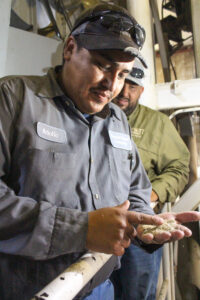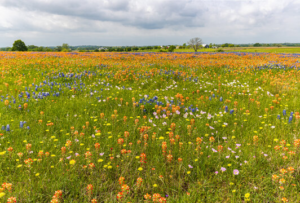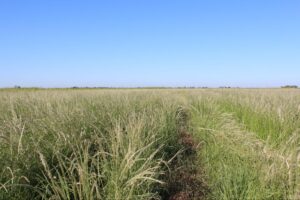Diversity is key to a healthy, thriving ecosystem. If you’re going to have to have a lot of variety, you might as well include a show stopper.
Maximilian Sunflower shines as part of the “Big Four” perennial forbs with similar nutrition and nectar sources. Maximilian Sunflower—Latin name, Helianthus maximiliani—has its own merits as an ornamental. The bright, yellow petals burst forth in the fall and are extremely palatable to deer, antelope and livestock. This later season timeline offers a great resource of seeds compared with other sunflower species. It also attracts doves, quail and songbirds in the fall. However, they aren’t the only winged creatures drawn to the striking, golden petals. When our production field of these beauties bloom, you can literally hear the land humming from all the pollinator activity.
The Maximilian Sunflower stretches anywhere from 3 feet in dry uplands to 6 or 7 feet in deeper soil. It has been historically overgrazed. Often in the Texas Hill Country, you will see the beautiful blooms of these flowers in the bar ditches along the highways. It’s a welcome sight as the flowers can be up to 3 inches in diameter. Over time, the colonies expand to grow 8 to 10 feet across. We’ve also had landowners approach us with the intent of planting this beauty for the purpose of photo backdrops on the prairie. This provides the same native benefits, as well as functionality for photo ops.
Proper planning and management are key to making sure these showstoppers stick around. Bamert’s experts can guide you to select the right blend that includes this attractive species, offering numerous benefits to the ecosystem, support for wildlife, and a wonderful view.



